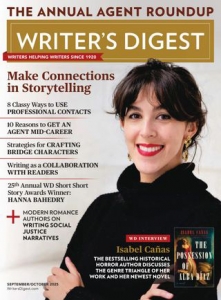Time to Turn a Page?
(photo – Chris Montgomery – Upsplash)
One decision every seller of products or services must face is how much to “give away” in order to “get”. A very provocative piece from friend and writing colleague Myra Levine offers some very challenging observations –and her own decisions on the matter…
Have you wondered whether your own marketing plan is working against you? That’s where I’m at right now.
First, a bit of background.
I am a writer and a writing coach. My industry—writing, editing, and publishing—has no licensing, no rules, no supervising organization, and no obvious way to prove your qualifications or abilities. So we can’t fling a pencil without hitting a fake editor, literary agent, or publisher. They troll social media, including Facebook, watching for unsuspecting writers who ask for help.
There’s a lot of money in this. The FBI recently arrested a group of scammers in the Philippines. The saddest victim was told that his self-published book had been chosen to become a Netflix series. All he had to do was pay the lawyers, screenplay writers, script consultants, producers, etc. He would make over a million dollars when it aired. He signed legitimate-looking contracts, and over a few years, he paid the scammers $500,000. The contracts were fake, there was no impending Netflix series, and he’ll never recover a penny.
How do you prove you’re REAL in a market like this?
My Approach to Prove I’m REAL and Attract Clients
I offer free live Zoom seminars each month, through Eventbrite and Hubspot. My focus is writing skills, and after 88 minutes of teaching, and a minute or two of sales pitch, I’ve proven my expertise. I present each seminar twice, on a Wednesday at 7 pm and a Saturday at 11 am, so eight hours apart, to accommodate more time zones.
Five years later, I’ve presented to well over 2,000 participants from all over the world. I have writers who come every month and love what I do.
Do you see the Problem?
I’ve developed a loyal fan base who will probably never become paying customers. Why should they, when I’m giving it up for nothing? I didn’t feel this cynical a few months ago, but several clients recently dropped away for financial reasons, which forced me to rethink what I’ve been doing.
The final smack on the head came a few weeks ago, when I bought a six-week online workshop with an excellent writing instructor. It’s the only way to get access to her magnificent brain, aside from her One-on-one Coaching program, which is quite expensive. She offers two classes a year and only takes seven students per class. She’s creating scarcity. I give FREE seminars on valuable writing topics. Every month. No scarcity.
She offers two options to access her wisdom, at different price points that offer different levels of personal attention. I’m offering two options—free and paid. If she offered monthly free seminars, I’d be there every month and probably never pay for her advice!
It’s time to PIVOT!
I’ve set up a meeting with the woman who helped me set up my business. I’m thinking about quarterly free seminars, and two paid courses per year, with a limited audience so everybody gets enough personal attention to justify the cost. Participants will also watch recorded videos in which I’ll present short lessons on writing skills, so I don’t have to cover those things in every in-person course.
I always intended to record the free seminars separately, without the Zoom audience, and charge a fairly small amount of money for these, since people who can’t make it to a seminar often ask if there’s a recording, but it’s a big job, and I never seem to get around to it. Short videos on specific topics would be free to those who pay for a class, while others would pay a small fee for each short video.
That’s my plan, at least. I’ll see what my business guru has to say.
Myra Levine is a novelist, memoirist, and writing coach. Her free online writing seminars through Eventbrite have attracted over 2,000 writers from all over the world. She publishes as M. E. Levine on Amazon.com & Audible.com Find her at www.MyraLevine.com






Follow us online!